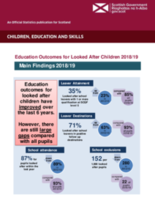Displaying 301 - 310 of 2214
This paper aims to describe the experiences of youth preparing to age out of cluster foster care in South Africa.
This paper describes the upEND movement, a collaborative movement aimed at abolishing the child welfare system as we know it and reimagining how we as a society support child, family, and community safety and well-being.
This Scoping Review investigated research relating to matching children needing care and adult carers.
The purpose of this study was to describe the stability of care histories from birth to age 18 for children in England using a national administrative social care dataset, the Children Looked After return (CLA).
The annual update on Education Outcomes for Looked After Children covering 2018-19 has been released by Scotland’s Chief Statistician.
This chapter provides an overview of one of the key factors implicated in young people’s contact with the criminal justice system: the criminalisation of children with care experience.
The present study uses concept mapping as an exploratory method, to identify themes that seem to be used by two groups of professionals in their judgement and decision making on reunification.
This study aimed to explore questions relating to caseworker’s training on ethnocultural diversity in connection with racial disparities and overrepresentation of Black children in child welfare services.
This study explored if domains of the Child and Adolescent Needs and Strengths assessment were associated with a prescribed trauma-focused treatment.
This paper reports the findings from a small qualitative study into child fosterage undertaken in Namibia in 2019.

